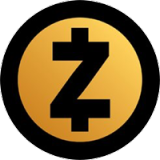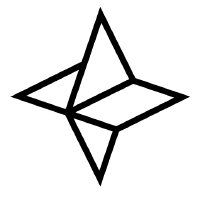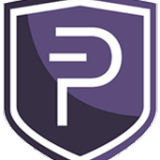Descrption:The Raiden Network is an off-chain scaling solution, enabling near-instant, low-fee and scalable payments. It’s complementary to the Ethereum blockchain and works with any ERC20 compatible token. The Raiden project is work in progress. Its goal is to research state channel technology, define protocols and develop reference implementations.
Raiden Network Token
v1
Principle and design goals
µRaiden is not part of the Raiden Network. However, it was built using the same state channel idea and implements it in a less general fashion. It focuses on the concrete application of charging per-use of APIs, digital content and utilities via micropayments in Ethereum based ERC20 tokens.
The main differences between the Raiden Network and µRaiden are:
- µRaiden is a many-to-one unidirectional payment channel protocol.
A payment channel in the Raiden Network is based on the same principles as µRaiden, but is laid out bidirectionally, so that the roles of sender and receiver are mutable. Additionally it uses a special cryptographic protocol to connect the owners of those singular payment channels to form an interconnected network of channels.
This allows participants of the Raiden Network to efficiently send transfers without being forced to pay for opening new channels with people who are already in the network - it is a many-to-many payment solution.
- µRaiden’s off-chain transactions do not cost anything as they are only exchanged between sender and receiver, because they don’t use intermediary channels.
Apart from the initial cost of opening up a channel, a µRaiden transaction doesn’t cost anything, because to deliver the payment itself is as easy as putting some additional data in a http-request.
To be able to use an existing channel in an interconnected network of channels, the Raiden Network requires an additional, sophisticated application transport layer. The forwarding of payments from sender to receiver through the network is based on incentivizing intermediary users to lend their resources in a secure and automated way.
Technology implementation
Consensus mechanism
Accounts and transactions
Off-chain transactions¶
A visual description of the process can be found here.
The heart of the system lies in its sender -> receiver off-chain transactions. They offer a secure way to keep track of the last verified channel balance. The channel balance is calculated each time the sender pays for a resource. He is prompted to sign a so-called balance proof, i.e., a message that provably confirms the total amount of transferred tokens. This balance proof is then sent to the receiver’s server. If the balance proof checks out after comparing it with the last received balance and verifying the sender’s signature, the receiver replaces the old balance value with the new one.
Smart contract system
Smart Contract¶
To be exact, there is a third party involved in µRaiden:
- the Enforcing or Smart Contract part
This is the part where the trustless nature of the Ethereum blockchain comes into play. The contract acts as the intermediary, that locks up the initial deposit from the Sender and enforces a possible payout of the funds based on the signed balance proofs, that the Sender sent out to the Receiver without the use of a blockchain.
Once the Receiver has a balance proof, it’s easy for the Receiver to prove to the contract that the Sender owes him some tokens. With the balance proof, the contract now can reconstruct the public key of the Sender and knows with certainty that the Sender must have agreed to the updated balance.
This means that there are only 2 transactions that have to happen on the blockchain:
- the initial opening of the channel with the prepaid amount the sender eventually wants to spend during the channel’s lifetime
- the final closing of the channel, where the sender’s initial deposit is paid out to the receiver and sender, based on the agreed on off-chain balances
If the channel runs low on funds before it is closed, the sender can increase the transferable amount of the channel with a topup transaction on-chain.
After a channel is closed, it can’t be used anymore. If the business-relationship between the same sender and receiver should revive again, a new channel has to be opened.
µRaiden uses its own token for payments which is both ERC20 and ERC223 compliant.
Cryptography
Distributed storage protocol
Cross-chain and exchange technology
Special technology
Economic model and incentive
Governance mechanism
Applications
This section covers the documentation of the individual parts of our µRaiden framework. We deliver Python implementations for the payment-receiver side in general as well as for the payment-sender side in a M2M (Machine-to-Machine) or IoT (Internet-of-Things) setup. For user-facing web applications, we provide a JavaScript implementation to directly serve the payment-senders logic to the customer.
Contributors
No contributors information for the version. to see perfessional version!
Comment
| Rank | Blochchain | Similarity |
|---|---|---|
|
1st
|
KNC
|
21.191019999999998% |
|
2st
|
ZEC
|
19.44763% |
|
3st
|
BTM
|
19.1146733333333% |
|
4st
|
DRGN
|
18.4870311111111% |
|
5st
|
FCT
|
18.0224633333333% |
No analysis results for the version. to see perfessional version!
| Rank | Blochchain | Similarity |
|---|---|---|
|
1st
|
TKY
|
4.0765% |
|
2st
|
RLC
|
3.8273% |
|
3st
|
NAS
|
2.3697% |
|
4st
|
Libra
|
2.2234% |
|
5st
|
PIVX
|
2.096% |
Name:
Company:
Email:
Location:
Repos:
Followers:











